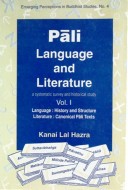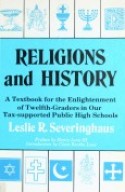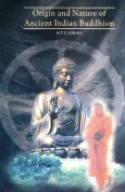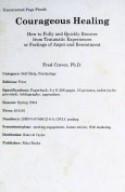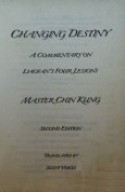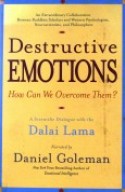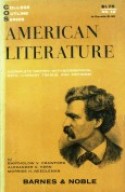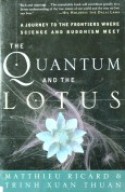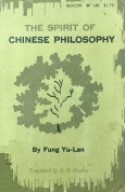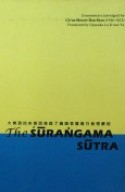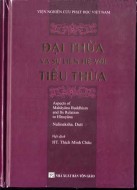Tìm Sách
Sách tiếng Anh-English >> Pali Language & Literature
Thông tin tra cứu
- Tên sách : Pali Language & Literature
- Tác giả : Kanai Lal Hazra
- Dịch giả :
- Ngôn ngữ : Anh
- Số trang : 787
- Nhà xuất bản : D. K. Printworld Ltd. India
- Năm xuất bản : 1994
- Phân loại : Sách tiếng Anh-English
- MCB : 12100000011642
- OPAC :
- Tóm tắt :
PREFACE
Pali is a literary language of Buddhists and it grew out of a mixture of dialects like all other literary languages, pan bears traces of many different Ind-Aryan dialects and has been a speech of the early middle Indo-Aryan period (600 B.C. to 200 B.C!). It is all the more confirmed by the use of numerous double forms in the pan language and spread of Buddhism to different dialectical regions. So it is not a homogeneous language. It is also believed that at the time of Asoka or in the post-Asokan period there was a Buddhist canon resembled Pali closely, but not entirely identical with pan canon. By tradition, pan had been closely connected with the local script in Sri Lanka. Burma (now Myanmar) and some Indo-China countries. It can also be said that a close relationship existed between pan and Vedic since some vocabularies of Sanskrit are similar with pan vocabulary, but both are independent and developed stages of last Aryan speech. This language is of vernacular character, because of its Idioms and colloquial expression, frequency of double forms and the presence of Sandhi.
Since pall is the accepted language of Buddhism of that time, this language and its various literature can serve as a basic source material for most of the scholars working on this field. It’s rich literature, which is a storehouse of not only ancient history and religion, but also serves the motive of studying social, political, cultural, linguistic, economic and architectural history of by-gone years. The social and cultural milieu of that time in the neighbouring countries, like. Sri Lanka. Burma (Myanmar). Thailand, etc. can also be revealed from its literature. So one can feel the necessity and importance of Pali language in this light.
Despite the growing interest of scholars in Buddhist studies and its language, only a few works have dealt with the Pali language and literature. This work is undoubtedly a systematic historical study of the pall language and literature, and it brings a connected account of the origin of Pali language and different phases of development of its literature.
For the convenience of the readers, this work is divided into two volumes. The first volume, focusing on history of pall language and its canonical texts, presents in considerable, detail the home land of Pali, its characteristics, the meaning of ‘Pall’, significant role played by Pall as vehicle of Buddhism, a true picture of the language and Importance of the study of pall. While delving on Dhamma and Vinaya, this volume also elaborately discusses Sutta Pitaka, Vinaya Pitaka and Abhidhanvna Pitaka texts.
Its second volume covers a detailed study about the non-canonical Pali works and literature. Besides dealing comprehensively with various commentaries on the Abhidhamma, It covers other invaluable commentaries by the well-known commentators Buddhadatta, Buddhaghosa and Dhammapala. Also, this volume turns out to be the first ever study to singly explore all the significant Pali Chronicles from Sri Lanka, Myanmar and Thailand and other Pali literary pieces, manuals and texts including grammar, lexicons, law, etc.
This work is an elaborate and scientific study about the Pali language and literature which can be regarded as the first of its kind and most complete book on the subject. Although the themes are approached from different sources, yet the descriptions and interpretations discussed here are based on primary sources.
I express deep gratitude to my teacher. Dr. Sukumar Sengupta, Ex-Reader in the Department of Pall, Calcutta University for giving me his invaluable guidance in my work. I must thank Prof. Dillip Kumar Roy of the Department of Museology, Calcutta University. Prof. (Dr.) Mrlnal Kanti Ganguly, Department of Sanskrit of Calcutta University and Dr. Dipak Ranjan Das, Department of Ancient Indian History and Culture, Calcutta University, for taking personal interest in my work.
My thanks are also due to my brother Mr. Subodh Kumar Hazra, my niece Mrs. Pratima Haidar and her husband Mr. Pranab Kumar Haidar for their keen interest in the publication of this book.
Last but not the least, I am thankful to the Librarian, Central University Library, Calcutta University, for permitting access to books in this Library.
KANAL LAL HAZRA
CONTENTS
Volume One
Preface
Abbreviations
Part 1 – (Language: History and structure)
- History and structure of Pali Language
Meaning of the Word Pali – Theories of the Origin – Periods of Development -Various Elements – Script – Phonology – Phonological Terms – Vowels – Dipthongs – Consonants – Sandhi – Gender – Declension – Pronoun – Conjugation – Importance of the Study of pall.
Part 2 – (Literature: Canonical Pali Texts)
- Dhamma and Vinaya Texts
Dhamma – Vinaya – Difference Between Sutta Pi taka and Vinaya Pitaka – Chronology of the Pali Pitaka Texts.
- The Sutta Pitaka Texts
Structure and Organization – Significance of the term Nikãya – The Dĩgha Nikãya – The Majjhima Nikãya – The Sarny utta Nikăya – The Anguttara Nikãya – The Khuddaka Nikăya.
- The Vinaya Pitaka Texts
Structure and Organization – The Suttautbhariga – The Khandhakas – The Parivăra (The Parivãrapãtha).
- The Abhidhamma Pitaka Texts
Structure and Organization – The Dhamma-sarigani – The Vibhahga – The Kathãưatthu – The Puggalapannatti – The Dhatukathã – The Yamaka – The Patthãna.
Volume Two (Literature: Non-canonical Pali Works)
- Extra-canonical Works
The Nettipakarana – The Petakopadesa – The Milmda Panha.
- Pali Commentaries
Structure – Tradition – Sinhala and Dravidian Commentaries – other Sources.
Buddhadatta: The Vinayauintcchaya – The uttaravmicchaya – The Abhidhammãvatára – The Rupárupavibhaga – The Madhurattha- vilasini- The Jinalankăra.
Buddhaghosa: The Visuddhimagga – The Samanta- pásadikã – The Kankhavitarani-The Sumahgalavilasini – The Popancoslidani – The Saratthappkasini – The Manorathapuraru -The Khud- dakanikãyatthakathă – The Dhammapadatthakatha – The Jatakatthakatha.
Dhammapãla: The Vimanavatthu Atthakatha – The PekwatOiu Atthakatha – The Theragatha Atthakatha – The Thengatha Atthakatha – The Cariyapitaka Atthakatha.
Commentaries on the Abhkthamn A: The Attha-salini- The Sammohavinodani – The Dhătu-kathappakaranatthakatha – The Puggala- pannatti Atthakatha – The Kathavatthu Atthakatha – The Yamakappakarana Atthakatha – The Patthanappakarana Aịịhakatha.
- Pali Chronicles
From Sri Lanka: The Dtpauaihsa – The Mahã-vamsa – The Culavamsa – The Buddha-ghosuppatti – The mahũbodhiuarhsa – The Dathauarhsa – The Thũpauamsa – The Hattavanagallaviharavamsa – The Rasavahini – The Samantakuta Vannanà – The Nalatadhatu-vamsa – The Sãsanavamsadipa
From Myanmar: The Cha-kesa-dhatu-vamsa – The Gandhavcutisa – The Sasanavamsa.
From Thailand: The Cãmadevivamsa – The Jinakălamăli – The Sangitivamsa – The Mulasãsanã – The Pra Sihing – The Ratana Bimbawongs – The Pahsãvadản Kruh Kao
Chabàb Praset Aksaraniti – The Pathamasambodhi – The Uppătasanti -The Saddhamma Sahgaha.
- Singular Pali Literary Pieces
The Anãgatavarhsa – The Jinacarita – The Telakatăhagăthă – The Pajjamadhu – The Saddhammopăyana – The Pancagatidipana.
- Pali Manuals
The Saccasahkhepa – The Abhklhammattha Sahgaha -The Nămarupapariccheda – The Nămarũpasamasa -The Suttasahgaha – The Partita -The Simalankãppakarana – The Khuddakasikkha -The Mủlasikkhá
- Other Miscellaneous Text
– Pali Grammar
– Lexicons or Lexicography
– Poetics and metres (Works on Rhetorics and Metrics)
– Law -Myanmarese
– Pali Tracts in the Inscription (in India and abroad).
Bibliography
Index
 Facebook
Facebook
 Google
Google
 Google+
Google+
